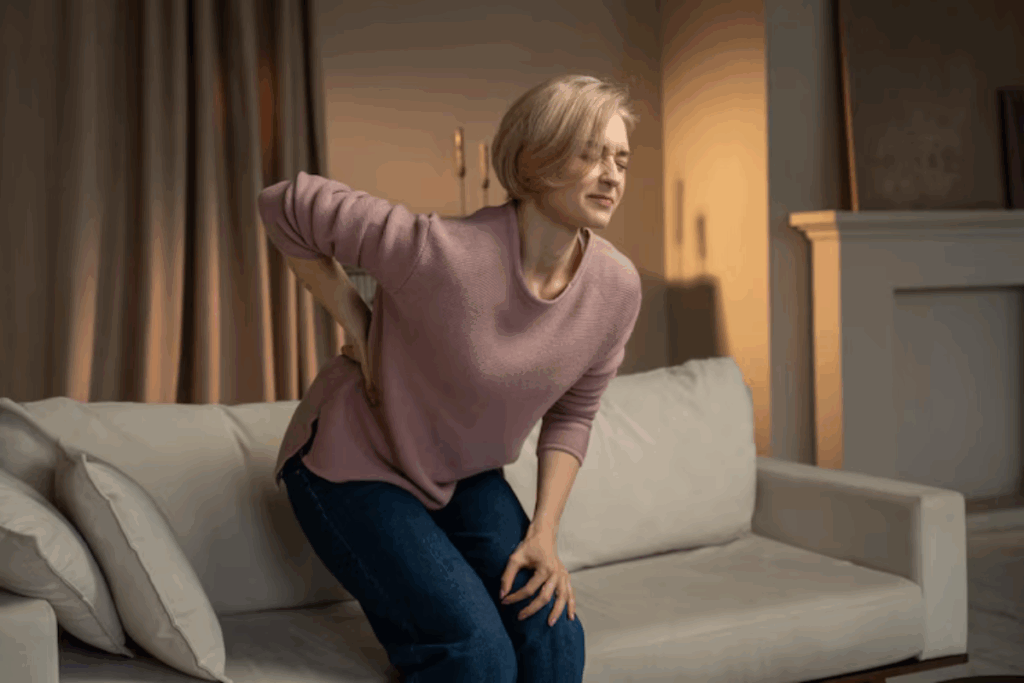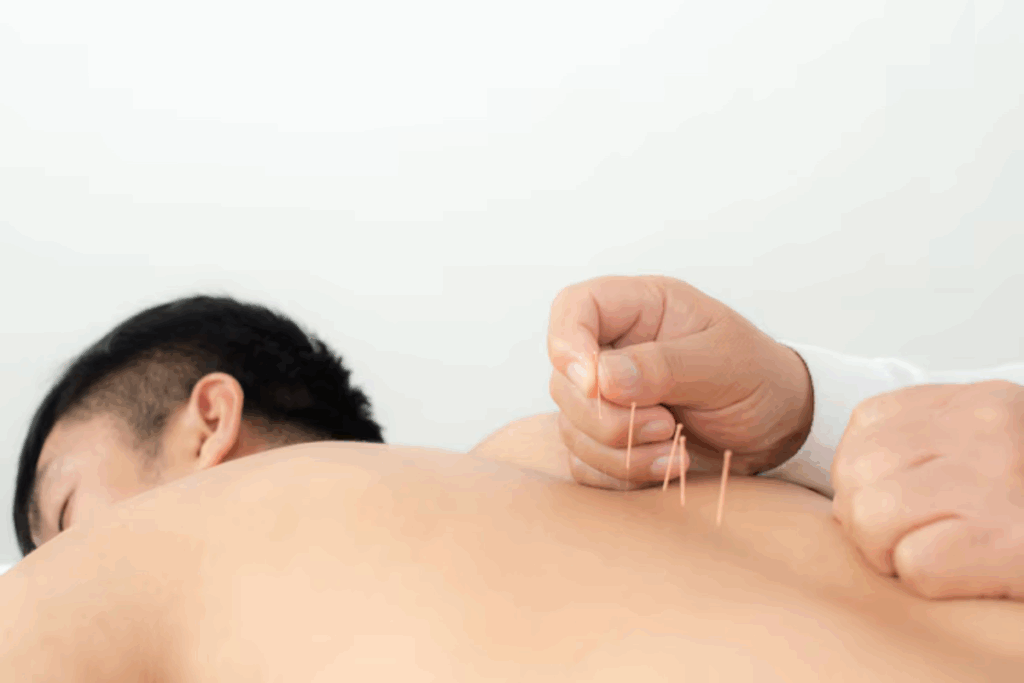Pain isn’t always where it seems. Sometimes, the tight knot in your neck is what’s causing that stubborn headache. Or that deep ache in your lower back? It could actually be a tight spot in your hip. These painful muscle knots are known as trigger points, and Trigger Point Therapy is all about finding and treating them.
Think of your muscles like ropes. When a part of that rope is tangled or knotted, it pulls on the rest, causing tension and discomfort. That’s exactly how trigger points work. They’re small, sensitive spots in your muscles that can cause pain, not just where they are, but in other areas too. This is called referred pain.
Trigger Point Therapy is a hands-on treatment where a trained therapist applies focused pressure on these knots to help them “release.” Once that pressure is released, blood flows better, muscles relax, and pain often disappears — sometimes instantly.
People use Trigger Point Therapy to treat:
- Back and neck pain
- Tension headaches
- Stiff shoulders
- Muscle spasms
- Pain from poor posture or overuseF
It’s not just about feeling better in the moment. With regular sessions, this therapy helps restore movement, ease chronic pain, and support overall muscle health.
How Trigger Points Cause Pain

Trigger points are tight knots in muscles that stay contracted even when the muscle should be resting.
These knots can block blood flow and trap waste in the muscle, making it feel sore, stiff, or tender.
Pain isn’t always at the trigger point. It often shows up in a different area — this is called referred pain.
Example: A trigger point in your shoulder may cause pain in your arm or hand.
Common causes of trigger points include:
- Poor posture (like slouching over a computer)
- Muscle overuse (heavy lifting or repetitive work)
- Stress and anxiety
- Injury or trauma to the muscle
- Lack of movement or stretching
They don’t just hurt — they can limit movement too. Many people with trigger points feel stiffness or tightness when trying to stretch or move.
If left untreated, these trigger points can lead to chronic pain, reduced range of motion, and even headaches or fatigue.
Common Trigger Points and Their Symptoms

Neck and Shoulders
Tight spots in these areas can lead to:
- Tension headaches
- Neck stiffness
Pain that travels down the arms
Upper Back and Shoulder Blades
Trigger points here often feel like:
- A deep ache between the shoulder blades
- Pain when reaching or lifting
Burning or tingling near the spine
Lower Back
Common symptoms include:
- Pain that spreads to the hips or legs
- Stiffness when bending or sitting for too long
- Muscle tightness after standing
Hips and Glutes (Buttocks)
These trigger points may cause:
- Discomfort when walking or climbing stairs
- Pain down the back of the leg (often mistaken for sciatica)
- A feeling of weakness or imbalance
Jaw and Face
Muscle knots in the jaw can result in:
- Clicking or pain when chewing
- Earaches or toothaches with no dental cause
- Headaches across the forehead or behind the eyes
Symptoms of Trigger Points (no matter the location):
- A dull, aching pain
- Muscle tightness
- Limited range of motion
- Sudden twinges when touched or moved
- Feeling better after applying pressure or heat
Key Benefits of Trigger Point Therapy

Relieves Pain Naturally
- Reduces both local and referred pain
- Often brings fast relief, especially for tension headaches, neck, and back pain
Improves Flexibility and Movement
- Releases tight muscles
Helps you move more freely with less stiffness
Boosts Blood Flow
- Improves circulation in treated areas
- Helps muscles heal faster by delivering oxygen and nutrients
Restores Muscle Function
- Allows muscles to work more efficiently
- Reduces fatigue and discomfort during daily activities
Supports Better Posture
- Relieves the strain caused by slouching or imbalanced muscle use
- Encourages natural alignment
Reduces Stress and Tension
- The hands-on approach calms the nervous system
- Can lower anxiety levels and promote better sleep
Complements Other Therapies
- Works well alongside physical therapy, chiropractic care, and massage
- Safe for most people, including those recovering from injuries
Popular Techniques Used in Trigger Point Therapy
Manual Pressure (Also called Ischemic Compression)
- The therapist uses their fingers, thumbs, or elbows to press directly on the trigger point.
- Pressure is held for a few seconds until the muscle begins to release.
- It may feel tender at first, but many people feel relief right after.
Dry Needling
- A thin, dry needle (like an acupuncture needle) is inserted directly into the trigger point.
- It causes a small twitch in the muscle, which helps it relax.
- Often used by physical therapists for deeper muscle release.
Massage Therapy Focused on Trigger Points
- Slow, deep strokes are used to locate and relax muscle knots.
- Helps improve blood flow and loosen tight areas across larger muscle groups.
Positional Release Techniques
- The therapist places your body in a comfortable, pain-free position that shortens the muscle.
- Held for 60–90 seconds to allow the muscle to reset and relax.
- Very gentle and useful for sensitive or painful areas.
Stretching and Post-Isometric Relaxation
- A combination of stretching and relaxing muscles after applying mild resistance.
- Helps re-train muscles and improve range of motion.
Trigger Point Therapy vs. Other Pain Relief Methods
When it comes to managing muscle pain, not all treatments work the same way. Trigger Point Therapy stands out because it goes straight to the source — the muscle knots causing the pain — instead of just masking the symptoms.
| Treatment Method | Focus Area | How It Works | Best For | Limitations |
| Trigger Point Therapy | Muscle knots | Applies pressure or needling to release tight spots | Chronic pain, headaches | Soreness after session |
| Massage Therapy | Muscle relaxation | Uses strokes to relax muscles & improve circulation | Stress relief, mild tension | Less effective for deep knots |
| Pain Medications | Nerve signals | Blocks pain or reduces swelling | Short-term pain relief | Doesn’t treat root cause |
| Chiropractic Care | Spine & joints | Adjusts joints for mobility | Back pain, posture | Doesn’t target muscle knots |
| Physical Therapy | Strength & recovery | Exercises, stretches, dry needling | Rehab, long-term pain | Requires consistency |
How Trigger Point Therapy Helps with Tension-Type Headaches
Tension-type headaches often feel like a band of pressure around the head. What many people don’t realize is that the source of this pain usually begins in the muscles—not the head itself.
Trigger Point Therapy is highly effective for managing and reducing tension-type headaches by addressing the muscle knots responsible for referred pain.
Targets the True Source of Pain
These headaches are frequently caused by tight muscles in the neck, shoulders, and upper back. Trigger points in muscles like the upper trapezius, suboccipitals, and sternocleidomastoid can send pain signals to the head. Treating these specific areas often leads to immediate headache relief.
Reduces Referred Pain
Muscle knots often send pain to other areas. For example, a tight spot in the neck might cause pain at the temples or behind the eyes. Trigger Point Therapy identifies and treats these sources, stopping the pain where it starts.
Relieves Muscle Tension and Improves Circulation
When muscles are tense, they restrict blood flow and add pressure to surrounding tissues. By releasing trigger points, this therapy helps restore proper circulation, easing the muscle tension that contributes to headaches.
Clinically Proven to Reduce Frequency and Severity
Research has shown that therapies like dry needling, ischaemic compression, and massage focused on trigger points can reduce how often headaches occur and how intense they feel. Many people also report shorter headache episodes after treatment.
Provides a Natural Alternative to Medication
Trigger Point Therapy is a drug-free approach to headache management. It’s especially helpful for those who want to reduce their reliance on over-the-counter or prescription medications. It can also be combined with other treatments like physical therapy, posture correction, or stress management for better results.
Role of Nutrition and Hydration in Muscle Health
Muscles don’t just need movement — they need the right fuel and fluids to stay healthy and pain-free. Without proper nutrition and hydration, your body becomes more likely to develop tight muscles and trigger points.

Why Hydration Matters
- Muscles are made up of about 75% water.
- When you’re dehydrated, muscle fibers tighten and lose flexibility, which increases the risk of developing trigger points.
- Staying hydrated helps your muscles recover faster and maintain elasticity.
Tip: Drink water throughout the day — not just when you feel thirsty. For most adults, about 8–10 glasses a day is a good target, more if you’re active or sweating a lot.
Key Nutrients for Muscle Health
- Magnesium
- Helps muscles relax and prevents cramping.
- Found in leafy greens, nuts, seeds, and whole grains.
- Calcium
- Essential for proper muscle contraction and nerve function.
- Found in dairy, tofu, almonds, and broccoli.
- Potassium
- Balances fluids in your body and supports nerve signals to muscles.
- Found in bananas, sweet potatoes, and avocados.
- Vitamin D
- Helps the body absorb calcium and supports muscle strength.
- Found in fortified foods, sunlight exposure, and fatty fish.
- Protein
- Needed for muscle repair and growth.
- Found in meat, eggs, legumes, and dairy products.
What to Avoid
- Excess caffeine or alcohol – Can dehydrate the body.
Highly processed foods – Often low in nutrients and may promote inflammation.
Nutrition and Trigger Point Therapy Work Together
Eating well and staying hydrated won’t replace therapy, but they make each session more effective. A well-nourished, hydrated muscle is more responsive to treatment and heals faster.
Simple Tips to Prevent Trigger Points
You can stop trigger points from forming by taking care of your muscles every day. Here’s how:
- Sit and stand with good posture – Keep your back straight and shoulders relaxed.
- Move often – Avoid sitting too long. Take short stretch breaks.
- Stretch daily – Loosen up tight areas, especially neck, shoulders, and back.
- Drink water – Muscles need water to stay soft and flexible.
- Eat healthy foods – Nutrients like magnesium and calcium keep muscles strong.
- Manage stress – Relax your body with deep breathing, sleep, or light exercise.
- Avoid repeating the same motion too much – Switch tasks or take breaks if you’re doing something over and over.
These easy habits help your muscles stay healthy — and help you stay pain-free.
Understanding the Theories Behind Trigger Point Pain
Experts have studied trigger points for years, and while there’s still more to learn, a few main theories help explain how they form and why they hurt.
Integrated Trigger Point Hypothesis
- Suggests that tiny muscle fibers stay stuck in a tight position.
- This may be due to extra chemicals (like acetylcholine) keeping the muscle “switched on.”
- Leads to poor blood flow, waste build-up, and pain.
Central Sensitization Theory
- Says that long-term pain changes how the brain and nerves respond.
- The body becomes more sensitive, even to light pressure or normal movement.
- Trigger points may send signals that “turn up the volume” on pain.
Referred Pain and Nerve Involvement
- Pain from a trigger point is often felt in a different spot.
- This is because nearby nerves get irritated and send pain signals to other areas.
- For example, a trigger point in the neck might cause a headache.
These theories explain why trigger points can cause strong, lasting, or unusual pain — even when nothing looks injured on the outside.
Is Trigger Point Therapy Right for You?
Trigger Point Therapy is a great option if you have muscle pain that doesn’t go away, tension headaches, or stiffness from sitting too much or overuse. It’s safe, natural, and targets the root cause of pain — not just the symptoms.
It may help if you:
- Have ongoing neck, back, or shoulder pain
- Get frequent tension headaches
- Want relief without relying on medication
- Are recovering from injury or surgery
Always speak with a trained therapist, especially if you have other health conditions or are pregnant.
Safety Considerations and Side Effects
Trigger Point Therapy is generally safe when performed by a trained professional. However, like any hands-on treatment, there are a few things to keep in mind.
Common and Mild Side Effects
- Soreness in the treated area (like after a workout)
- Light bruising or tenderness for a day or two
- Feeling tired or relaxed after a session
When to Use Caution
- If you’re pregnant — certain points should be avoided
- If you have bleeding disorders or are on blood thinners
- If you have a serious medical condition, talk to your doctor first
Always let your therapist know about your health history and any medications you’re taking.
Living Pain-Free with Trigger Point Therapy
Living with daily pain can feel like carrying a heavy weight you never put down. But relief is possible — and it doesn’t have to come from pills or surgery.
Trigger Point Therapy offers a hands-on, drug-free way to treat the real cause of muscle pain. Whether you’re dealing with tension headaches, neck stiffness, or sore shoulders, this therapy can help you feel better, move better, and live better.
By releasing tight muscle knots, improving blood flow, and supporting your body’s natural healing process, Trigger Point Therapy gives lasting relief — not just a quick fix.







